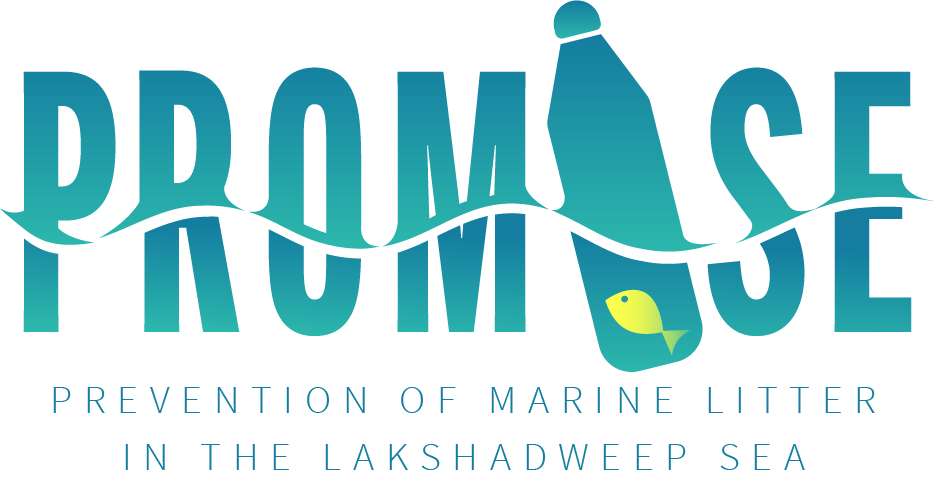BLOG: 🌊 Tracing Waste from Source to Sea: Lessons from India, Sri Lanka, and the Maldives
| Date |
Date
|
| Subject |
Subject
BLOG
|
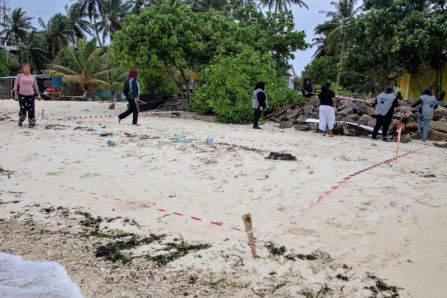
Marine litter is one of the most pressing environmental challenges facing South Asia’s coastal regions. Across the Lakshadweep Sea — bordered by India, Sri Lanka, and the Maldives — discarded plastics, packaging, and fishing gear threaten marine life, tourism, and community livelihoods.
To confront this, the PROMISE Project (Prevention of Marine Litter in the Lakshadweep Sea), funded by the European Union and implemented by Maldives National University, adelphi Research gGmbH, Parley, National Cleaner Production Center Sri Lanka, TERI and STENUM Asia, set out to understand how waste travels from its source on land to its final sink in the ocean.
Three in-depth country studies — conducted in Kovalam (India), Kalutara (Sri Lanka), and Maafushi (Maldives) — combine scientific fieldwork with local engagement to reveal not just the scale of plastic leakage, but how communities can stop it.
🔬 The PROMISE Methodology: Following Every Item of Waste
At the core of the project are two complementary approaches: Material Flow Analysis (MFA) and Source-to-Sink (S2S) mapping.
Material Flow Analysis (MFA)
MFA quantifies how materials — particularly plastics — move through a defined system. The PROMISE teams divided beaches into 10-metre segments and classified them by pollution level (high, medium, low). Every visible item was manually collected, cleaned, categorized by material and use, counted, and weighed. This systematic process produced a detailed snapshot of what kinds of litter are entering the marine environment and in what quantities.
Source-to-Sink (S2S) Analysis
While MFA shows what is found on the beach, S2S explains how it got there. Through interviews and audits involving hotels, guesthouses, restaurants, waste collectors, and municipalities, the project traced the journey of waste from its generation (“source”) through handling, transport, and disposal pathways (“sinks”). This integrated approach connects data on consumer behaviour, infrastructure gaps, and seasonal tourism impacts with physical measurements of pollution.
India: Kovalam’s Coastal Challenge
Kovalam Beach in Kerala was one of the first PROMISE pilot sites. Known for its crescent shoreline and vibrant tourism, it also faces the downside of popularity — a high load of single-use plastics.
Field surveys revealed that plastics made up 69 % of waste items and 85 % of total weight, dominated by bottles, caps, wrappers, and disposable cutlery. Paper and wood fragments were secondary contributors.
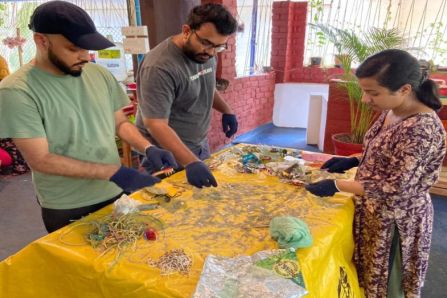
Through interviews with beach vendors, hotels, and diving schools, researchers identified inconsistent segregation, limited recycling, and seasonal accumulation as core problems. Waste collection depended heavily on informal workers with little coordination from municipal authorities.
The Source-to-Sink study extended this insight by linking litter composition with hotel operations and tourist numbers. It highlighted that beverage containers and packaging waste surged during holidays and festivals.
Key recommendations for India:
Establish permanent waste-sorting and recovery facilities near beaches.
Introduce deposit-return or refill systems for beverage bottles.
Engage the tourism industry through certification programs on waste reduction.
Support informal collectors with equipment and formal recognition.
The Kovalam study demonstrates how better coordination between local tourism boards and waste departments can transform a hotspot of pollution into a model for circular tourism.
Sri Lanka: Kalutara’s Plastic Footprint
On Sri Lanka’s western coast, Kalutara Beach mirrors the region’s wider struggle with coastal waste.
PROMISE’s MFA found that plastics accounted for 78 % of total litter by count and 46 % by weight — the highest proportion among the three study sites.
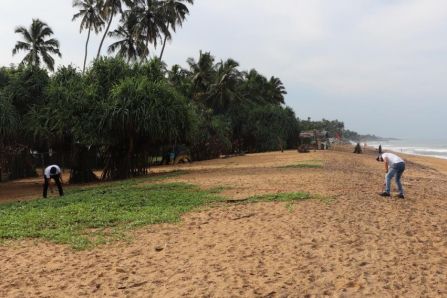
Disposable food packaging, PET bottles, and multilayer sachets dominated the waste profile.
The National Cleaner Production Centre (NCPC) of Sri Lanka led the fieldwork, conducting additional waste characterizations at eight hotels and seven guesthouses.
These audits showed that plastic bottles alone represented nearly one-fifth of total hotel waste.
While Kalutara benefits from some organized collection through municipal services and informal recyclers, segregation at the source remains limited.
Restaurants and small enterprises often mix recyclables with organic waste, reducing recovery potential.
Insights from S2S:
Tourism and coastal commerce significantly amplify plastic generation.
Informal collectors provide valuable service yet lack support or incentives.
Seasonal monsoon floods redistribute inland waste onto beaches.
Recommendations for Sri Lanka:
Expand source-segregation and recycling initiatives in hospitality sectors.
Introduce municipal incentives for waste reduction and recycling compliance.
Build public awareness through coastal clean-up campaigns linked to schools and NGOs.
Kalutara’s case emphasizes that solving marine litter is not only a technical task — it also requires social engagement and consistent policy enforcement.
Maldives: The Tourism–Plastic Paradox
In the island nation of the Maldives, PROMISE focused on Maafushi Island, a major tourism hub with limited land for waste disposal.
The study revealed that plastics made up over 54 % of debris by item count and 26 % by weight.
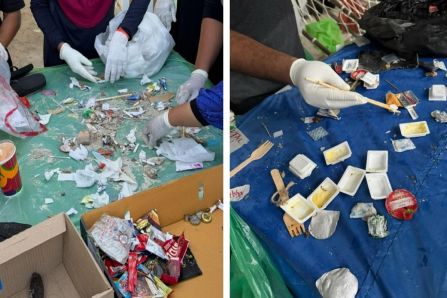
Despite ongoing awareness efforts, plastic bottles, packaging, and Styrofoam fragments were prevalent along beaches and dumpsites.
The S2S methodology was used to monitor waste from nine hotels and eight guesthouses, directly correlating daily waste volumes with occupancy rates.
Findings showed that plastic bottles alone accounted for 11.8 % of total hotel waste, while weak segregation and limited recycling infrastructure allowed much of this to end up in open burning or informal dumping.
Recommendations for the Maldives:
Establish small-scale recycling and compacting units on tourist islands.
Partner with ferry operators for inter-island waste transport.
Encourage refillable bottle systems and composting in guesthouses.
Engage tourists through behavioural nudges and visible recycling stations.
Maafushi demonstrates that even small islands can pioneer circular solutions if hotels, municipalities, and NGOs collaborate around shared waste targets.
🌍 Common Threads Across the Lakshadweep Sea
Across all three countries, PROMISE uncovered striking similarities in waste patterns and management gaps:
Plastic dominance: In every site, plastics were the leading pollutant — ranging from 54 % in the Maldives to nearly 80 % in Sri Lanka.
Tourism as a driver: Hotels, restaurants, and seasonal visitors create significant spikes in single-use waste.
Weak segregation systems: None of the study areas had consistent, formalized waste sorting.
Seasonality matters: Waste volumes rose sharply during high tourist months and monsoon periods.
Community readiness: NGOs, SMEs, and informal collectors showed strong willingness to improve practices if given the right support.
These shared challenges also point to shared opportunities — for cross-border learning, regional data harmonization, and stronger private-sector engagement.
🧭 From Data to Action: Building a Circular Coastal Future
PROMISE’s methodology has proven that science and participation can coexist.
By uniting quantitative evidence with stakeholder dialogue, the project produced a model that governments, municipalities, and businesses can adapt elsewhere.
The reports collectively recommend:
Integrating MFA/S2S assessments into national marine-litter monitoring frameworks.
Strengthening waste-management infrastructure in tourism zones.
Promoting extended-producer responsibility and plastic take-back schemes.
Leveraging citizen science for ongoing litter data collection.
Enhancing regional cooperation across the Lakshadweep Sea through joint training and data sharing.
The three country reports together form a regional blueprint for cleaner coasts and a circular blue economy. They showcase how evidence-based action can reduce plastic leakage, protect marine biodiversity, and sustain tourism-dependent livelihoods.
